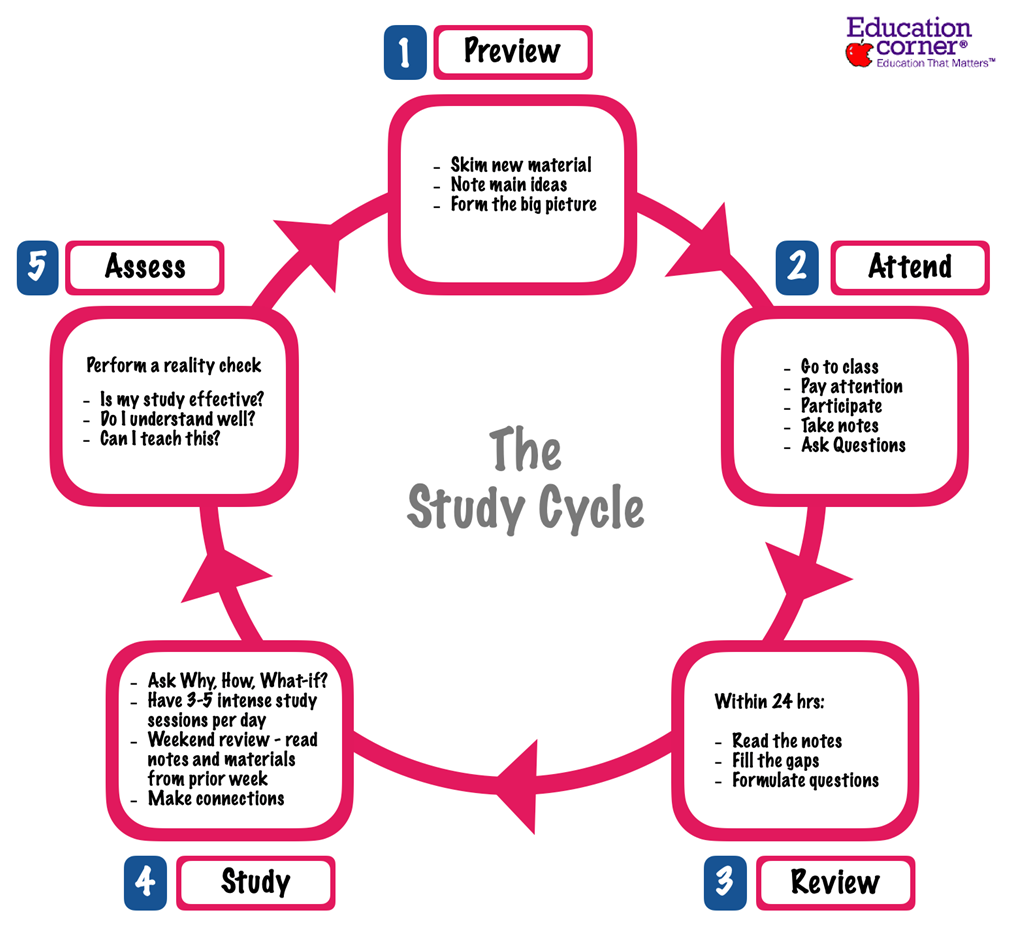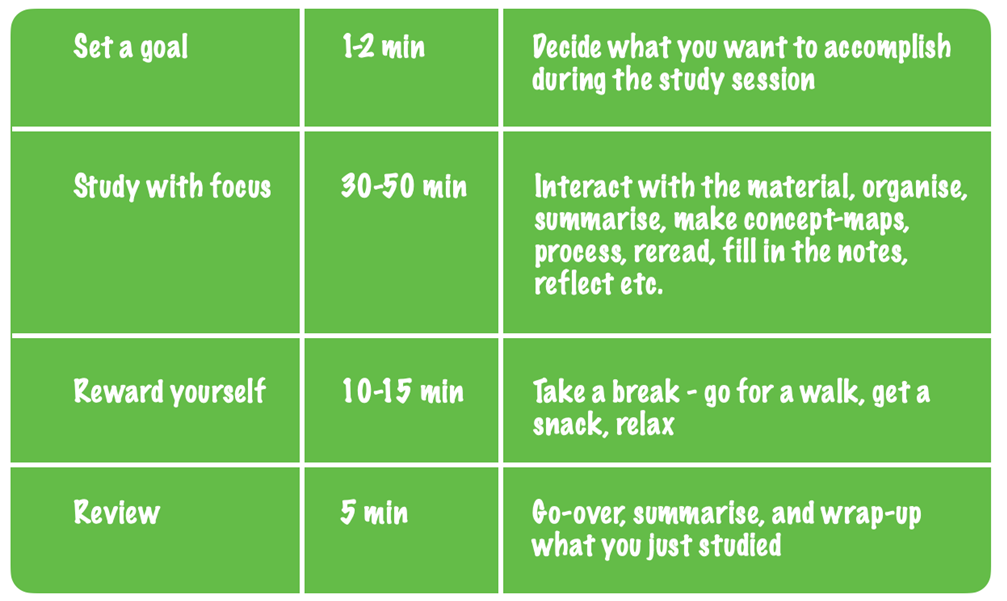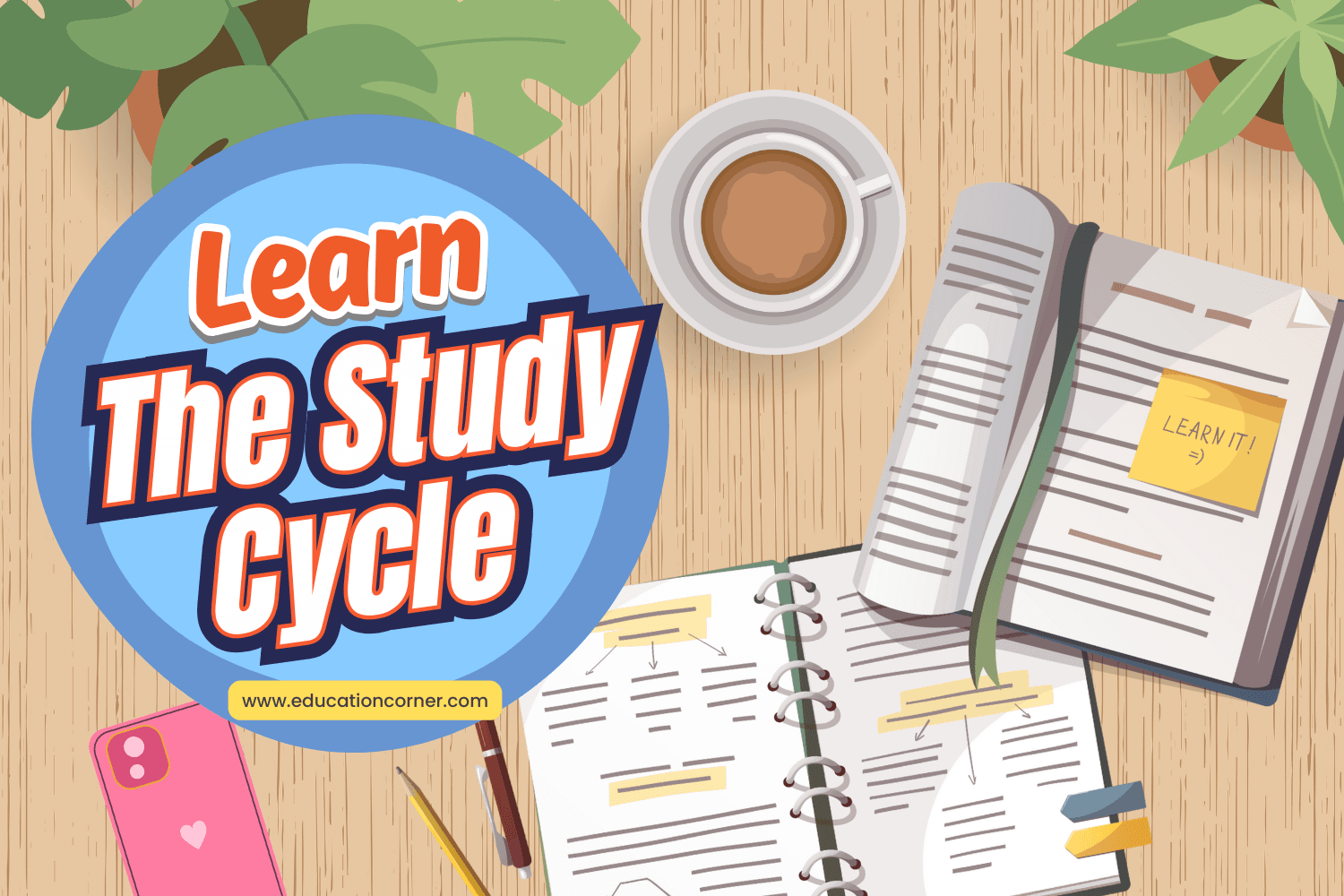As a student, there are times when you question the effectiveness and efficiency of your study habits. This feeling may become more pronounced as you transition to a higher grade or if the course delivery method changes.
At some point, most students wonder how to begin studying a new subject or how to use their study time most effectively. This is where the Study Cycle helps.
The study cycle is a 5-step approach to learning designed to help students become more efficient learners. It works the way your brain learns best. It reinforces new content and builds confidence.
Here are the five steps of the study cycle:

Step 1 – Preview
The goal of the preview is to develop a big picture of what you’ll be covering in class. Attending the class (Step 2) becomes more effective when you have some context of what you’re about to learn and come prepared with questions.
Skim through the text and other study materials. Complete the pre-class reading even if your teacher does not specifically ask. Use the course schedule on the syllabus to find out what will be covered and preview the content.
Quickly review the chapter and note the headings, subheadings, bold words, graphs, pictures, and summaries. If the teacher has provided the learning objectives or handouts ahead of time, preview them and print them out to take notes on.
Skimming, reading, and attending classes aren’t incredibly effective on their own, but when used in combination (and in repetition), they result in great learning.
If you skip reading for class, you miss out on the opportunity to make the best use of the lecture, which means you’ll have to study more later to learn the material.
Step 2 – Attend
Attending class is an obvious step, but some students don’t take it seriously enough. Missing even a few classes can be detrimental to one’s learning, especially in subjects like math. Attending a class requires active participation and engagement, not just physical presence.
The class is also where you learn about the teacher’s learning expectations and areas of focus. You also get an idea about what’s going to be on the test, which helps you focus on what to study later (Steps 3 & 4).
The class also provides opportunities to ask questions and participate in discussions with the teacher and peers. This helps you gain more insights and intuition into the subject.
When in class, take effective notes that help you remember information. Avoid using phones and computers unless necessary for assignments. Keep track of your questions; if you don’t get to ask them, approach your teacher after class.
Step 3 – Review
Take about 10 minutes to review your class notes, preferably right after class but at least sometime during the day. This process helps transfer the information you learned during class from your short-term to long-term memory.
There is a forgetting curve for every new information you learn.
Reviewing soon after class, when the material is still fresh, helps you fill in the gaps and determine what you might need help with. It also reinforces new concepts and increases confidence.
When reading, actively engage with the material. Merely letting your eyes scan over the material won’t do much good. Explain the material to yourself, summarize the key points, ask questions, and think about the big picture.
This is also where you start to plan out how you might want to study the material you learned. If you’ve followed steps 1 and 2, this becomes the third time you’ve engaged with this content. This repeated exposure helps you remember and understand the material more effectively.
Step 4 – Study
To reinforce the new material learned in class and to ensure you thoroughly understand the subject, schedule several focused study sessions during the week.
Such sessions need not be long, but they must be intense. The most effective study sessions are typically 30-50 minutes long, but this can vary depending on the subject and the material.
Shown below is one possible format you can follow:

As you study, ask yourself ‘how,’ ‘why,’ and ‘what if’ questions. Remember—repetition is the key.
Spreading your study time over short sessions is known as “distributed practice.” Research has shown that this is much more effective than marathon study sessions before the exam (also known as “massed practice”).
It helps you learn at a deeper level because you have more time to process, make connections, and ask questions.
Step 5 – Assess
Many students forget to reflect and evaluate their mastery and understanding of the material they learn and study. It is important to make sure what you’re doing is working and be open to changing your techniques if they don’t work for you.
On a regular basis, take a step back and ask yourself some questions:
- Does the information I’m studying make sense?
- Am I confident with the new material?
- Do I understand the material well enough to teach someone else?
- Am I meeting the learning objectives?
Practice self-testing on a regular basis. Discuss what you’re learning with classmates. Assessing your studying from time to time is an essential aspect of learning.

